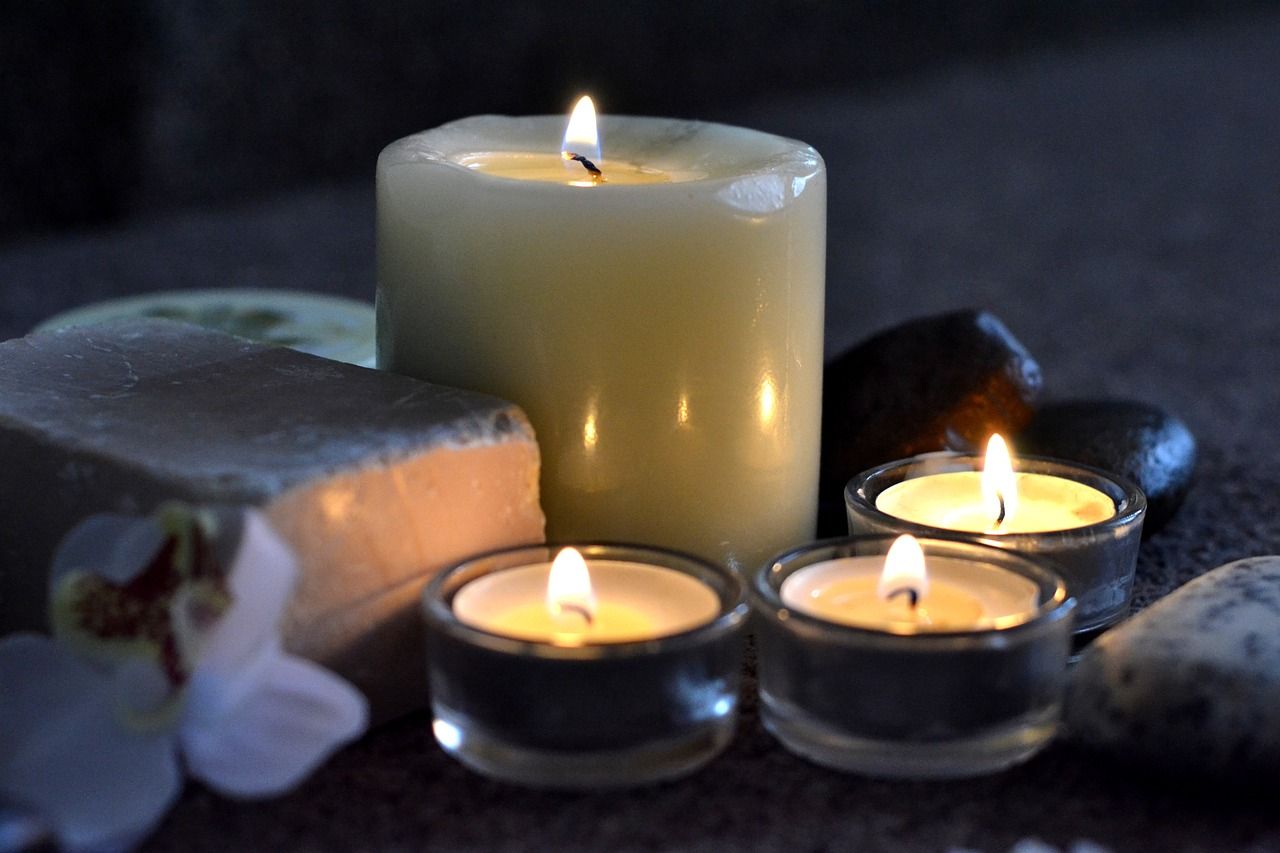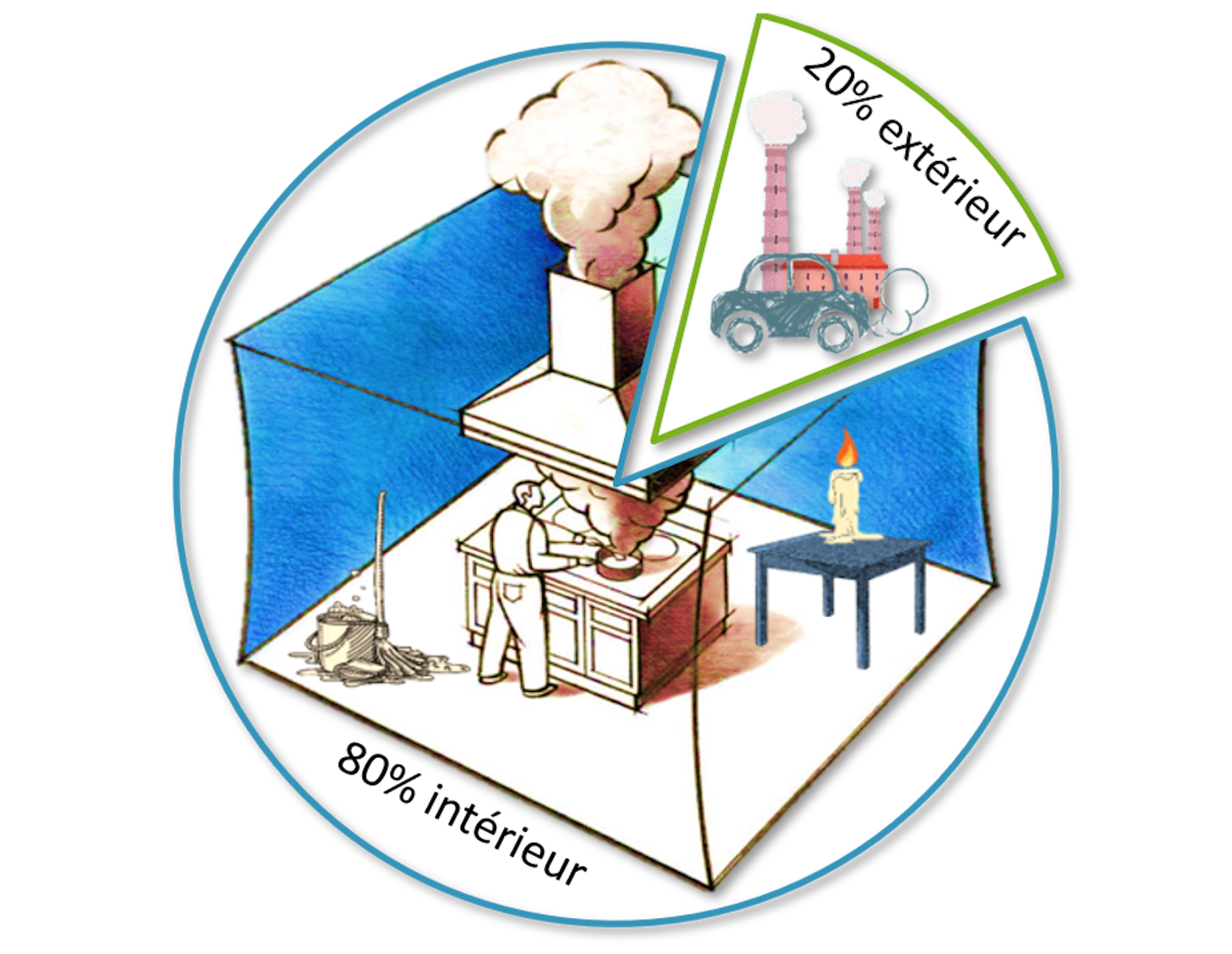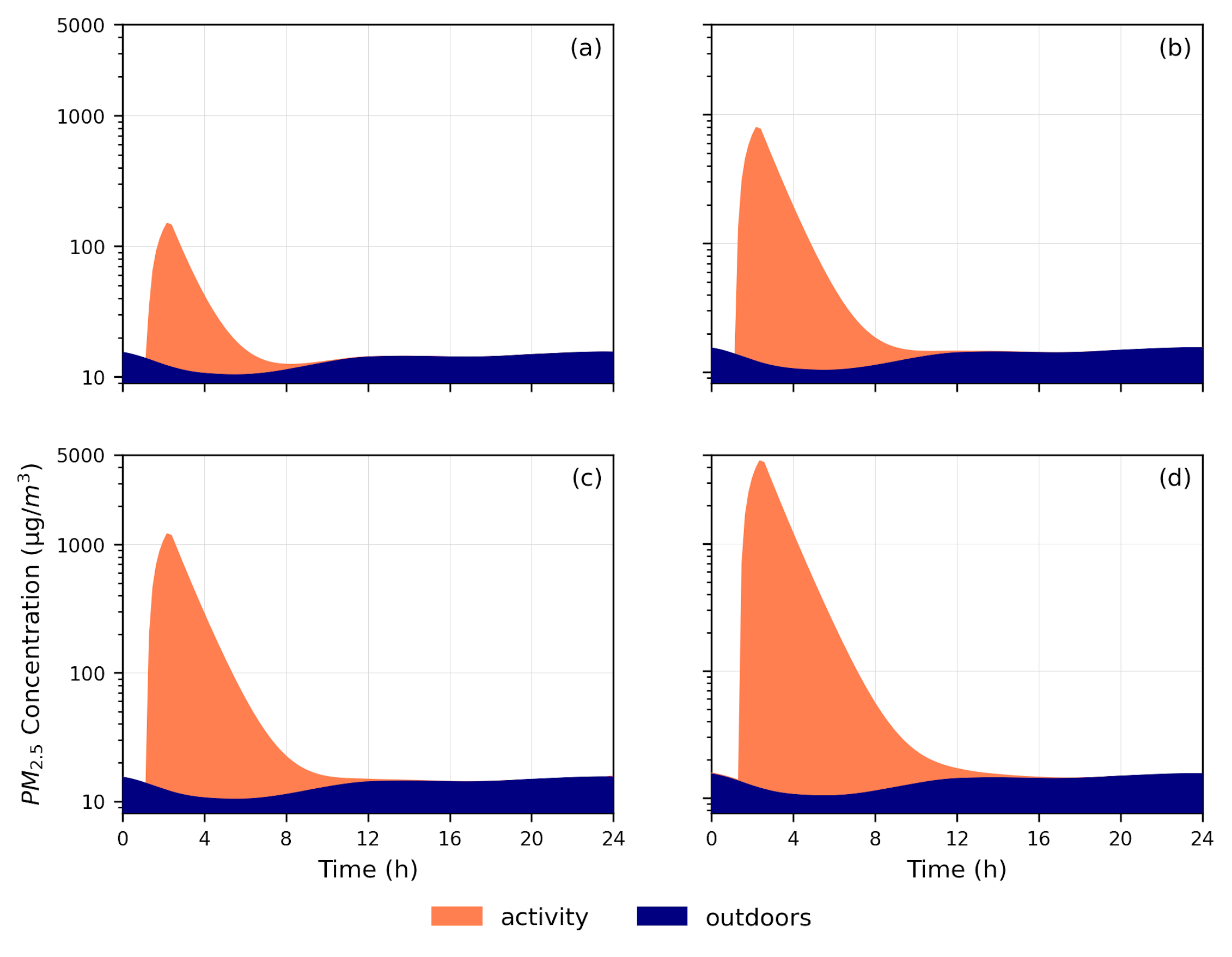Candles, incense, frying... beware of fine particle pollution!
Published by Adrien,
Source: The Conversation under Creative Commons license
Other Languages: FR, DE, ES, PT
Source: The Conversation under Creative Commons license
Other Languages: FR, DE, ES, PT
Follow us on Google News (click on ☆)
Lighting candles in your living room or frying food in your kitchen... many everyday activities contribute to the emission of fine particles harmful to health. There are solutions available to limit indoor air pollution.

The combustion of ambience candles and incense releases harmful particles into indoor air.
Image Pixabay
2.5 microns, about 40 times smaller than the thickness of a hair, is the maximum size of fine particles or PM2.5. Unfortunately invisible to the naked eye, they can infiltrate our respiratory tracts and end up in our lungs.
Fine particles could thus increase the risk of cardiovascular and respiratory diseases as well as cancers, particularly in the respiratory system.
A significant health danger in small size
According to the Global Burden of Disease study, in 2019, the number of deaths worldwide attributed to fine particles was 4.2 million.
According to more recent research, air pollution ranks as the leading cause of healthy life year loss due to illness and premature death, especially for young children exposed to high concentrations of fine particles (PM2.5) indoors, as their lungs are still developing.
Fine particles can come from natural sources, such as deserts, volcanoes, or dry earth resuspended by wind. However, they are often emitted from anthropogenic sources: fossil fuel combustion (e.g., from vehicles and industrial machinery), mechanical friction (which can come from power generation, electric motors, tires), or mineral extraction and industrial processes.
Other more localized sources are responsible for poor indoor air quality: candles, incense, cigarettes, wood fires, cooking without an extractor hood, among others. Since we spend between 80 and 90% of our time indoors, it is crucial to understand and avoid the associated health risks.

At home, most pollutants are emitted from within the dwelling.
Daily activities emitting particles
We have studied these sources, which correspond to typical indoor activities, to assess the associated health risks. Data on emissions (in mass of fine particles PM2.5 per second) were obtained by consulting scientific literature, and the concentrations to which occupants are exposed were calculated.
Next, the inhaled amount and its health impact were assessed. These were calculated in terms of years of healthy life lost (disability-adjusted life years or DALYs), associated with the risk of cardiopulmonary disease.
Several ventilation scenarios were studied, given that pollutants emitted into indoor air can be expelled outdoors by opening windows. However, depending on the activity and outdoor conditions, occupants are not always inclined to ventilate properly. Note that the ventilation rate is measured in air volumes (of the room) renewed per hour.
Candles create a relaxing mood but emit harmful particles
Take the example of a candle. It is often lit indoors, especially in winter, to create a cozy atmosphere and spread pleasant scents. Thus, it would seem counterproductive, given the intended effect, to open the windows to remove the emitted substances, even though they are harmful to health.
Indoor spaces are often confined (characterized by a small air volume and low ventilation rate), so the concentration of emitted pollutants can rise significantly. The thresholds recommended by the United Nations Environment Programme (UNEP) are around 15 µg/m³ for fine particles, which corresponds to a well-ventilated home away from traffic.
Without ventilation, a candle (or incense) lit for an hour increases the concentration to the point that its value exceeds the recommended threshold by more than 20 times. It would be responsible for 7 to 21 μDALYs, or 4 to 11 minutes of life lost, per occupant per hour of activity.
This raises thoughts about the real effect of candles. The question arises whether it is truly reasonable to light one after cooking smelly fish, for example. Instead of removing strong odor-producing substances, the combustion adds particles to the air.

Concentration of fine particles penetrating from outside (navy blue) and emitted indoors (orange) after an hour of daily activities:
(a) toaster,
(b) grill,
(c) lit cigarette (second-hand smoke),
(d) solid fossil fuel heating.
Bhoonah et al. 2023
Frying and grilling: the most impactful cooking methods
Besides, cooking itself can be a source of fine particle emissions, originating from food, oil, or the oven. Frying and grilling are the most impactful cooking methods, raising the concentration of fine particles PM2.5 in the air up to 40 times the recommended threshold.
We know that air infiltrates homes through window edges, doors, and between wall joints. Depending on home ventilation, after an hour of frying or grilling, the health impact is estimated at less than a second of life lost (in the case of good ventilation) and up to about three-quarters of an hour of life lost (for a sealed home with an infiltration rate of 0.2 air volume per hour). Poorly sealed homes allow a high rate of air infiltration.
What about traditional cooking with solid fuels, like wood, charcoal, or corn stalks, still used by 50% of the world's population, particularly in rural areas of Asia, Africa, and South America?
It would be responsible for nearly an hour of life lost per person per hour of activity, considering a high ventilation rate (around 3 to 14 air volumes renewed per hour, the most probable rates for these contexts with poorly sealed homes). Note that this practice is particularly dangerous for young children.

Frying and grilling are the cooking methods that emit the most fine particles into the air.
Image Pixabay
Other indoor air pollutants
There are other indoor pollutants besides fine particles, categorized as physical pollutants, chemical pollutants, and biological contaminants. It should be noted that the fine particles we discuss here are classified as physical pollutants (like fibers, for instance).
Often, a single source, notably the activities mentioned in this article, emits various pollutants. This is the case, for example, with 3D printers, increasingly popular, which are responsible for emitting several pollutants (polycyclic aromatic hydrocarbons, volatile organic compounds, and nanoparticles).
Ventilate, cook without oil and use range hoods, etc.
We've seen that ventilation reduces health risks. However, it's not always a viable solution. In situations like traditional cooking with high fine particle (PM2.5) emissions, occupants' exposure to pollutants remains alarming, and even high ventilation rates are insufficient.
On an individual level, other measures can be taken to reduce indoor pollution. First, as in the candle example, it's important to question the need and benefits of the activity. Lighting a candle is pleasant, but it might not be wise to do so every day with all doors and windows shut. A minimum of ventilation would allow one to enjoy the advantages while removing some of the pollutants.
Regarding cooking, range hoods could capture up to more than 80% of cooking emissions. Furthermore, cooking without oil would reduce pollutant emissions by up to 46%, while frying would double emissions compared to steaming. Similarly, gas stoves emit twice as much as electric stoves.
In general, particularly since the Covid pandemic, a growing awareness of indoor air quality has emerged. It is essential to communicate on this topic to encourage vigilance when engaging in activities that may release harmful substances into the air.